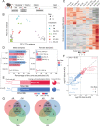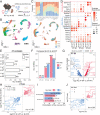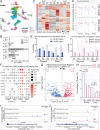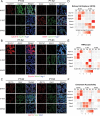This is a preprint.
Direct androgen receptor regulation of sexually dimorphic gene expression in the mammalian kidney
- PMID: 37205355
- PMCID: PMC10187285
- DOI: 10.1101/2023.05.06.539585
Direct androgen receptor regulation of sexually dimorphic gene expression in the mammalian kidney
Update in
-
Direct androgen receptor control of sexually dimorphic gene expression in the mammalian kidney.Dev Cell. 2023 Nov 6;58(21):2338-2358.e5. doi: 10.1016/j.devcel.2023.08.010. Epub 2023 Sep 5. Dev Cell. 2023. PMID: 37673062 Free PMC article.
Abstract
Mammalian organs exhibit distinct physiology, disease susceptibility and injury responses between the sexes. In the mouse kidney, sexually dimorphic gene activity maps predominantly to proximal tubule (PT) segments. Bulk RNA-seq data demonstrated sex differences were established from 4 and 8 weeks after birth under gonadal control. Hormone injection studies and genetic removal of androgen and estrogen receptors demonstrated androgen receptor (AR) mediated regulation of gene activity in PT cells as the regulatory mechanism. Interestingly, caloric restriction feminizes the male kidney. Single-nuclear multiomic analysis identified putative cis-regulatory regions and cooperating factors mediating PT responses to AR activity in the mouse kidney. In the human kidney, a limited set of genes showed conserved sex-linked regulation while analysis of the mouse liver underscored organ-specific differences in the regulation of sexually dimorphic gene expression. These findings raise interesting questions on the evolution, physiological significance, and disease and metabolic linkage, of sexually dimorphic gene activity.
Conflict of interest statement
Declaration of Interests
The authors declare no competing interests.
Figures







References
-
- Aufhauser D.D., Wang Z., Murken D.R., Bhatti T.R., Wang Y., Ge G., Redfield R.R., Abt P.L., Wang L., Svoronos N., et al. (2016). Improved renal ischemia tolerance in females influences kidney transplantation outcomes. Journal of Clinical Investigation 126, 1968–1977. 10.1172/JCI84712. - DOI - PMC - PubMed
Publication types
Grants and funding
LinkOut - more resources
Full Text Sources
Molecular Biology Databases
Research Materials
